| Overview |
The Types page allows you to modify the following types:
- Item Types
- Document Types
- Vendor Types
- Service Tag Types
- Unit of Measure Types
- Comment Types
You can change the data set by selecting an available option in the drop list.

Note: Change and CAPA Types are defined on the Change/ECO and CAPA data pages.
|
 |
Modifying Object Types |
Top |
|
To add a new object type, first select the object type you wish to create.

Next, click the Add Type button.
The New Type dialog box will appear.

From the New Type dialog box, specify the name and description and click the Apply or Add button.
Note: when adding a new Item type you can also specify an AutoNumber group and Part Number prefix and suffix.

To remove an object type, first select the object type you wish to remove.

Next, click the Remove hyperlink from the Actions column.

Note: When deleting certain objects, the system will "disable" them rather than deleting the database record.
You can configure the Administrator to display "disabled".

"Disabled" items can be enabled by clicking the Enable hyperlink.

To edit an object type, first select the object type you wish to modify.

Next, click the Edit hyperlink from the Actions column.
The Edit Type dialog box will appear.
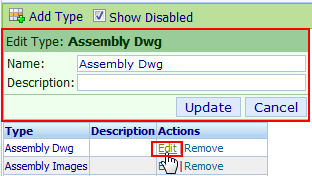
Modify the desired settings and then click the Update button.
|
|
|
Item Types are the main database object classification for all database items.
Under item types you can create database categories and attributes to further classify a database item.
Item Types and Categories can be configured in any manner you deem appropriate to
best match you classification scheme. Typical use of Item Types would be: "Electrical
Parts", "Mechanical Parts", "Assemblies", "Documentation", etc. Assigning an item
type to a database item is optional.
Item Types settings appear on the General Page of the Item form.
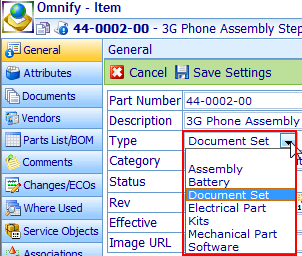
Item types can be used as search and report criteria.
Item Types can be used when defining process rules such as: signoff workflows, required fields, part number schemes, etc.
|
 |
Document Types |
Top |
|
Document types are used by Omnify to classify what types of documents are stored in the database.
Document Types are available in the Document Properties (adding and editing documents) dialog box in Desktop.
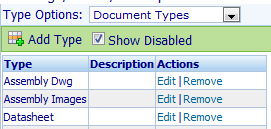
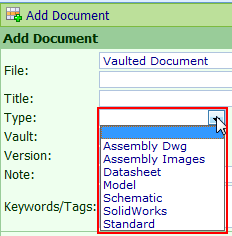
You can use Document Types to define user permissions/access to specific documents.
Refer to the Permissions section for more information on controlling user access to documents.
|
 |
Vendor Types |
Top |
|
Vendor types are used by Omnify to classify a particular vendor (I.e. Supplier, Manufacturer, Distributor, System Integrator, etc.).
These options are available when adding or editing a vendor (Vendor Properties dialog) in Desktop.
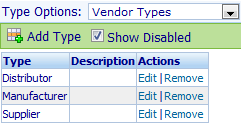
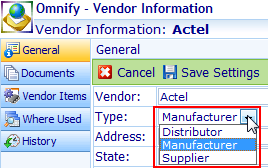
|
 |
Service Types |
Top |
|
Service Object types are used by Omnify to classify a service object (I.e., Serial Number, Lot Number, RMA, Customer Name, etc.).
These options are available when adding or editing a service object in Desktop.
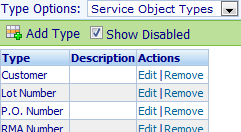
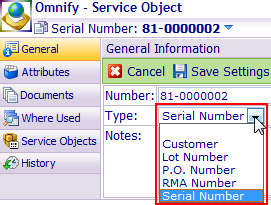
|
 |
Unit of Measure Types |
Top |
|
Unit of Measure types are used by Omnify to classify a particular BOM item quantity.
These options are available when adding or editing a BOM item in Desktop.
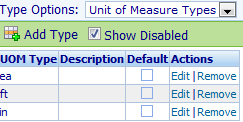
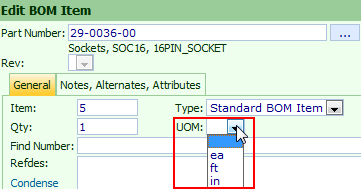
You can also set a default Unit of Measure by select the unit of measure and clicking the checkbox in the Default column.

When adding a BOM item the UOM field will automatically be set to the default UOM.
To clear the default UOM, uncheck the checkbox in the Default column.

|
 |
Comment Types |
Top |
|
Comment types are used by Omnify to classify a particular User Comment added to any Omnify object.
These options are available when adding or editing a Comment in Desktop.
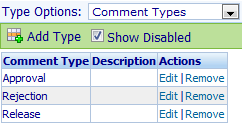
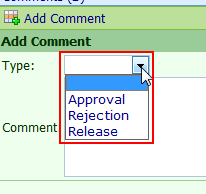
|